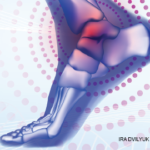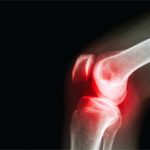In an article on osteoarthritis (OA), Hunter et al stated that current physician guidelines by the ACR for the management of OA of the knee and hip are outdated and incomplete, with current clinical management often limited to analgesic medications—many of which now are under scrutiny because of safety concerns—and ‘cautious waiting.’ ”1 I couldn’t agree more. Frankly, it was with great reluctance that I changed my thinking on this subject many years ago. This change has greatly benefited my patients, and I am convinced that it can benefit yours. Now that there is enough “hard” data to support the premise that joint malalignment is a key cause of OA (see “Research Overview,” p. 33), I humbly submit that, for a few moments, you, too, think “outside of the box,” and see if this approach makes as much sense to you as it does to me.
Let’s face it, what we’re doing isn’t working. Although medications may temporarily alleviate the symptoms of OA, and joint replacement surgery has helped many to remain active, we’re not doing very much to stop the etiology or the progression of this “rising epidemic.”1
The Typical Scenario
I believe that the treatment options offered to someone with OA of the knee leave something to be desired. When joint pain becomes more than incidental, and medication no longer works as well or for as long as it used to, the patient will consult a rheumatologist or an orthopedic surgeon. If the symptoms of pain are not yet severe, the patient is often told to, “come back when it’s bad enough” and have the joint replaced, as nearly 600,000 patients do each year.2
At this point, if surgery is not performed, many patients are often left hanging, continuing to take their pain pills and trying to stay active until they can no longer tolerate their symptoms. Certainly, there should be a better alternative than “cautious waiting” until a joint replacement is needed, at which point the process may begin all over again. For some patients, the new prosthetic joint may loosen or wear out and need replacement too. This unfortunate scenario takes place every day in physicians’ offices all over the world. As you know, even if considered successful, a knee replacement will not generally be a “normal knee” with a full range of motion. A surgeon may be able to get a patient on the road again by putting a “run-flat” tire on their car, but those temporary tires are not as safe, and they will never give the comfortable ride or performance that the original set did.

